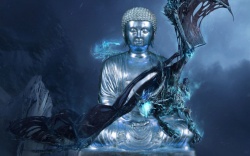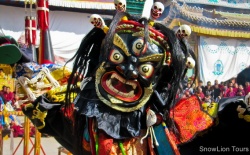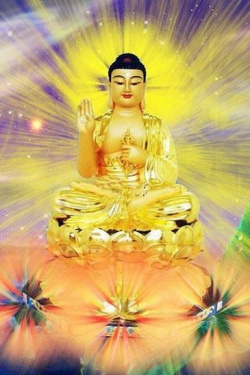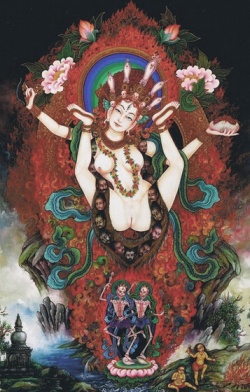Alfred "sunyata" Sorensen: a full Emptiness
Alfred Julius Emmanuel Sorensen (October 27, 1890 – August 13, 1984), also known as Sunyata, Shunya, or Sunyabhai, was a Danish mystic, horticulturalist, and writer. He lived in Europe, India and America.
The son of a peasant farmer, he grew up near Arhus in northern Denmark. His formal education ended when he was 14 years old when the family sold their farm. He then worked as a gardener on estates in France, Italy, and finally England. While working at Dartington Hall near Totnes, Devon, England, he met Rabindranath Tagore, the Indian Nobel Laureate poet. This was in 1929. The two shared conversation on a variety of topics. Sorensen introduced Tagore to gramophone recordings he had of Beethoven’s Late Quartets, whereupon the poet invited him to his newly created university, Shantiniketan, in Bengal. Sorensen, he said, could ‘teach silence’ there.
Sorensen visited India from 1930 to 1933 and came to see the country as his home. After initially staying at Shantiniketan, he went on to travel around India visiting places of interest to him. In 1933, he returned to the west to tie up loose ends and then headed back to India where he lived until the mid-1970s. When he returned to India this second time, he began wearing Indian clothing, a style of dress he would continue for the rest of his life.
Tagore introduced him to Nehru, and in 1934 Sorensen visited the home of Nehru’s sister and brother-in-law at their house in Khali, Binsar where he stayed and used his horticultural skills in their garden. During the summer he continued to travel. It was while staying with the Nehru family that one of their friends offered him a piece of land where he could live. Called Crank's Ridge it was near Almora.
India’s rich spiritual heritage provided a perfect environment for Sorensen’s natural mystical inclinations. During his first stay in the country he was initiated into Dhyāna Buddhism, but it was the Hindu Sri Ramana Maharshi who was to provide the biggest influence on his spiritual life. Sorensen had read Paul Brunton’s classic A Search in Secret India (1934), and soon after he actually met Brunton. Brunton arranged for his first visit to Sri Ramana.
Between 1936 and 1946, Sorensen made four trips to Sri Ramana's Tiruvannamalai ashram, staying for a few weeks each time. It was during his visit to Sri Ramana that Paul Brunton told him that Ramana had referred to him as a ‘janam-siddha’ or a rare born mystic. Indeed, a profound experience occurred to Sorensen while he was on his third visit to Sri Ramana. This was in 1940. “Suddenly," he wrote, "out of the pure akasha and living Silence, there sounded upon Emmanuel [his preferred name for himself] these five words, ‘We are always aware, Sunyata!’” He took these five words to be mantra, initiation, and name. He then used the name Sunyata, or subtle variations on it, for the rest of his life. The word "sunyata" meant "a full emptiness," which he quite liked.
Although Sorensen, or again Sunyata, as he came to be known for the last forty-four years of his life, kept his Almora hut as his base, he continued to travel around India visiting friends and ashrams. This was especially so during the cold, Himalayan winter months. He met many prominent spiritual teachers in addition to Ramana Maharshi, including Anandamayee Ma, Yashoda Ma (Mirtola), Swami Ramdas and Neem Karoli Baba.
Sorensen lived in India as a sadhu or ascetic, subsisting on donations. In 1950 he accepted half of a grant of 100 Rs a month offered to him by the Birla Foundation, a charitable body. He accepted only what he needed. He subsisted on this goodwill and the vegetables he grew in his garden. Living on Crank's Ridge, his neighbours included W. Y. Evans-Wentz, Lama Govinda, Earl Brewster, John Blofeld and others. Despite his notable neighbours, he put up a sign requesting silence of those who approached his small hut built into the rock.
From at least the 1930s he wrote diaries and reflections using a highly idiosyncratic and at times playful language. Oftentimes he combined English and Sanskrit, used obscure literary terms or invented his own words. In 1945 he wrote Memory, an autobiography. More of his writing is found in his Dancing with the Void. He acquired Indian citizenship in 1953.
Then, in 1973, some members of the Alan Watts Society arrived at his door, sent there by his neighbour, Lama Anagarika Govinda. They ended up asking him to come to California. "But I have nothing to teach, nothing to sell," was his reply. "That's why we want you," they said. When they got back to Sausalito, they found that Watts had died in their absence, so they again offered their invitation, one of them saying later that they saw in Sorensen what Watts had been writing about all his life. Watts himself often said, "I have nothing to teach, nothing to sell."
Consequently in late 1974 Sorensen set out on a four-month, all-expenses-paid visit to California. During his visit he 'gave darshan' at the Esalen Institute in Big Sur, and at Palm Springs, among other places. Finally, in 1978, he moved to California for good. This was at the age of 88 and after spending nearly half a century leading a life of the utmost simplicity in a remote corner of India. Settled now in America he held weekly meetings at Watt’s houseboat SS Valejo, where he would answer questions from visitors.
Sadly, on August 5, 1984, he was hit by a car while crossing the road in Fairfax, California, and died eight days later. He was 93.
Despite denying that he had a 'teaching,' he expounded an Advaitic world view and maintained that he had always known that "the source and I are one." Like Ramana Maharshi, he considered silence as both the highest teaching and "the esoteric heart of all religions." Silence for him was the stilling of desires, effort, willfulness, and memories. This was the "full emptiness" that he took his spiritual name Sunyata to mean.
For some of his more unusual notions, Sorensen coined words himself. "Innerstand" meant an intuitive comprehension that did not involve the intellect or effort, while "headucation" was mental conditioning. Those who falsely identified themselves with their individuality he referred to as "egojies," and he was fond of the Zen term "ji ji muge," meaning the interdependence of all things and events.
For his understanding of his essential nature, Sorensen used, in addition to "sunyata," the word "mu." "Mu" is an important term in Zen meaning "nothing," "an empty circle." He used this not only in reference to himself but as an exclamation. Alan Watts, coincidentally, is heard exclaiming "Mu!" in some of his audio tapes.



